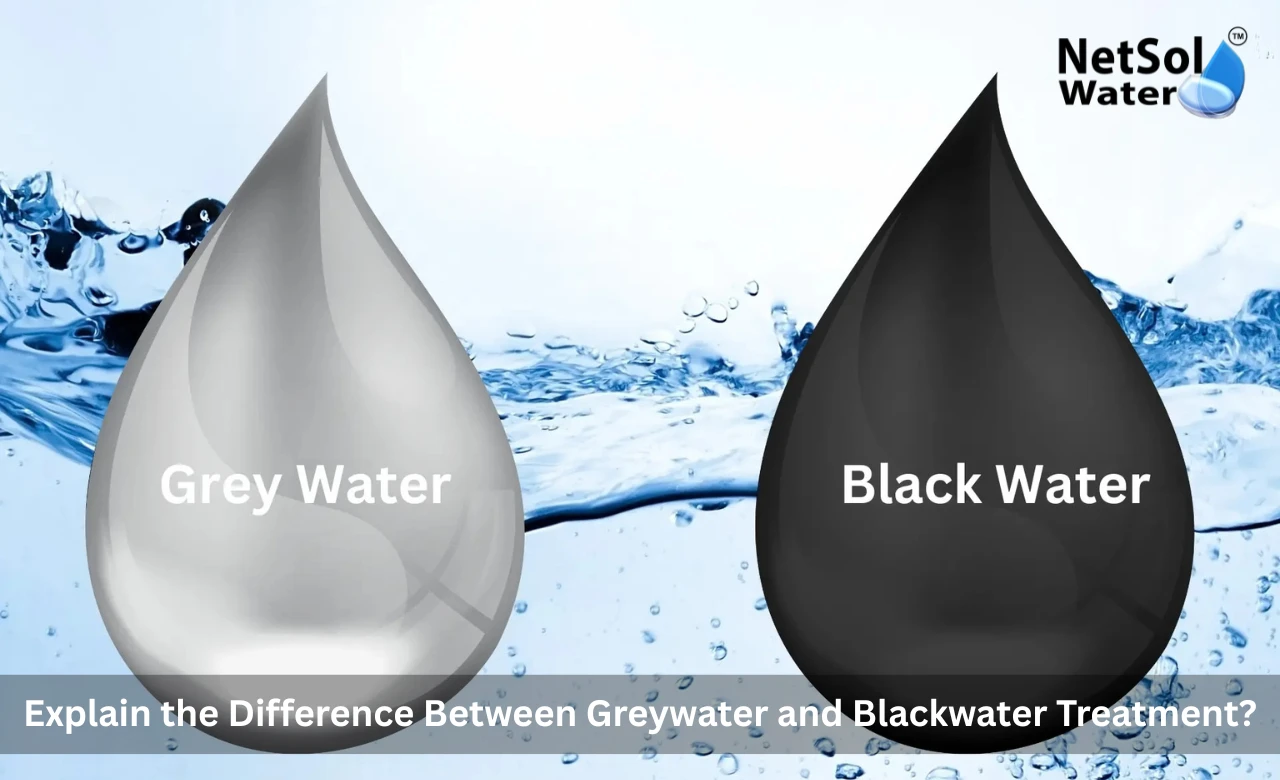Explain the Difference Between Greywater and Blackwater Treatment?
Waste Water Treatment matters for cities homes and industries. People expect clean water and safe disposal. Netsol Water is the leading Waste Water Treatment company in India and it designs plants for urban and industrial needs. We will explain the main difference between greywater treatment and blackwater treatment.
Greywater treatment
Greywater comes from baths sinks, laundry and hand washing. People consider greywater less hazardous than blackwater because it contains lower amounts of fecal matter. Still greywater carries soap, oils, hair, food bits and micro organisms. Let us have a look on some key aspects that planners monitor when they design greywater solutions.
Sources and characteristics
Greywater comes from showers wash basins washing machines and laundry taps. It contains soap residues hair lint and small amounts of food waste. The organic load in greywater stays moderate and the pathogen load stays lower than in blackwater. Designers check pH, suspended solids and fats to pick the right filters and biological units. Greywater shows more detergents and surfactants than blackwater. These chemicals can harm plants if the water goes to gardens without treatment. Greywater also shows grease that can block pipes when left untreated. For reuse teams screen and remove solids and then they use settling and biological steps to lower organics and microbes.
Treatment methods
Greywater treatment aims to make water fit for safe reuse. Systems start with coarse screens that remove cloth fibers hair and large particles. Next treatment uses sedimentation or simple filters to clear fine solids. Designers often add biofilters or constructed wetlands to break down organics. These systems use natural microbes that digest waste while plants help remove nutrients. Disinfection follows to reduce microbes. Methods can include chlorination ultraviolet light or slow sand filtration. The final step matches the quality needed for reuse. For toilet flushing the standards stay stricter than for landscape irrigation. An efficient greywater system saves potable water and cuts the load on sewers. Netsol Water plans these systems to meet local rules and to keep operation simple and affordable.
Blackwater treatment
Blackwater comes from toilets and sometimes from kitchen drains that mix heavy food waste. This stream carries high amounts of pathogens solids and organics. Let us have a look on some key areas where strict controls and stronger treatment steps matter.
Sources and characteristics
Blackwater comes mainly from toilets and kitchen sinks when they enter the same drain. It contains fecal matter urine and often kitchen grease and food scraps. The pathogen levels in blackwater stay much higher than in greywater. It also shows a higher organic load that can deplete oxygen in rivers and lakes if released untreated. Blackwater also contains micro plastics and chemicals from personal care products that need removal when the discharge goes to natural water bodies. For onsite systems planners measure biochemical oxygen demand total suspended solids and nutrient content to size the treatment tanks. These measures drive the choice of primary settling anaerobic digestion and further biological or chemical steps.
Treatment methods
Blackwater treatment aims to reduce pathogens organics and solids to safe levels before discharge or reuse. The process often starts with primary settling where heavy solids drop to form sludge. Engineers then use biological reactors where microbes convert organic matter to carbon dioxide and biomass. Many municipal plants add anaerobic digesters to reduce sludge volume and to capture biogas for energy. After biological steps teams use secondary clarification and then advanced filters or membranes to polish the water.
Key differences and choosing the right system
Greywater and blackwater differ in risk in treatment intensity and in reuse options. Let us have a look on some factors that planners consider when they choose systems and set budgets.
Health and environmental risk
Blackwater shows higher health risk because it carries fecal pathogens. Treating blackwater requires more steps and more safety checks. Greywater poses lower health risk but it still harms plants and soil if left untreated. For public safety teams set stricter limits on pathogen counts for blackwater discharge. Environmental rules also demand better nutrient removal from blackwater to protect rivers. Greywater rules focus on removing solids and reducing chemical residues to protect reuse sites.
Design and cost considerations
Greywater systems use simpler tanks filters and nature based units. They cost less to build and they lower potable water demand. Blackwater plants require larger tanks mechanical aeration and sludge handling systems. These needs raise capital and operational cost. Owners balance cost against long term benefits. For large sites and for municipal systems treating blackwater fully remains the core duty. For buildings that want onsite reuse greywater systems offer fast returns and steady savings.
Read some interesting information for Commercial RO Plant Manufacturer in Noida
Conclusion
Waste Water Treatment shapes public health, urban living and business operation. If you need a site assessment or a consultation on plant design, please contact Netsol Water for expert advice and practical options. The right Wastewater Treatment plan saves water protects health and reduces long term cost. Reach out now to start a discussion and to request a consultation.
Contact Netsol Water at:
Phone: +91-9650608473
Email: enquiry@netsolwater.com

